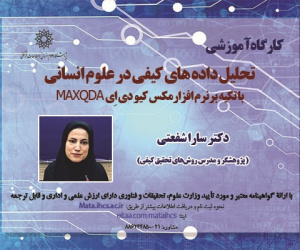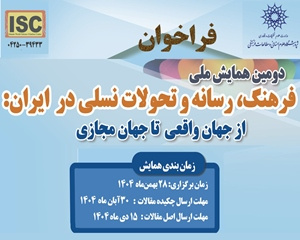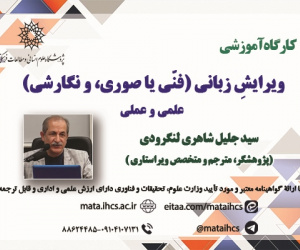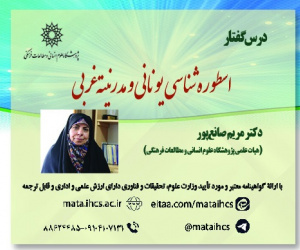تحلیل عدالت فضایی در توزیع و دسترسی به کاربری های شادی آفرین (مطالعه موردی: شهر بابل) (مقاله علمی وزارت علوم)
درجه علمی: نشریه علمی (وزارت علوم)
آرشیو
چکیده
مقدمه: دستیابی به شادی که امروزه هدف همه انسان ها است، در همه طرح ها و برنامه ریزی های شهری به ویژه در کشورهای درحال توسعه نادیده گرفته شده است. از جمله عوامل ایجاد شهر شاد، برنامه ریزی برای مدیریت اوقات فراغت و بهبود دسترسی به کاربری های تفریحی از جمله سینما، کنسرت های موسیقی، اماکن ورزشی، بوستان ها و... در سطح شهرها است، اما در ایران دسترسی به فضاهای عمومی و فرصت های نشاط آور محدود است و این فضاها به طور عادلانه در سطح شهرهای ایران توزیع نشده است و شهروندان برای دسترسی به این فضاها مشکلاتی دارند و این عوامل موجب افزایش استرس و اضطراب می شود و شادی و نشاط را از شهرها دور می کند. مطابق نظر مارتین، دولت باید با ایجاد سازوکارهای تنظیمی و تعدیلی، کاهش فاصله طبقه ثروتمند و فقیر، کاهش نابرابری در استفاده از امکانات رفاهی و ایجاد رضایتمندی در افراد جامعه، سطح شادی در جامعه را افزایش دهد. از این رو، ایجاد تعادل و عدالت فضایی در شهر از اصلی ترین اهداف در برنامه ریزی شهری به شمار می رود.شهر شاد نیز باید به شیوه ای عادلانه به افراد فضا، خدمات، امکانات، لذت، تفریح و هزینه تخصیص دهد. نهادهای کلان مدیریتی موظف هستند استانداردهای لازم را برای همه اعضای جامعه فراهم کنند؛ تا از این طریق، زمینه لازم برای رضایت و شادمانی را موجب شوند. مدیریت شهری از طریق توزیع عادلانه کاربری های شاد بر نشاط شهروندان اثرگذار است. توجه به جنبه های عدالت فضایی سیستم منسجمی دارد که از اجزا و عناصر گوناگون تشکیل شده و ناپایداری هر یک از این عناصر (مثل کاربری های تفریحی، پارک ها و فضاهای سبز و...)، بر کل مجموعه تأثیرگذار است. ارتباط بین عدالت و شادمانی اثبات شده است و سه نوع عدالت توزیعی، رویه ای و مراوده ای با یک دیگر در ارتباط بوده و هر سه بر شادمانی اجتماعی مؤثرند که در این میان میزان تأثیر عدالت توزیعی بر شادمانی اجتماعی بیش از دو نوع دیگر عدالت است. از این رو، مدیریت شهری در یک شهر شاد باید تلاش کند تا تمامی امکانات و خدمات به ویژه کاربری های شادی آفرین به طور عادلانه در دسترس شهروندان قرار گیرد. بنابراین تحلیل دسترسی عادلانه به کاربری های شادی آفرین در سطح شهرها به ویژه در کشورهای درحال توسعه که دچار نابرابری سازمان یافته ای هستند، بسیار ضروری است. همچنین با توجه به اینکه دسترسی کافی و عادلانه به کاربری های شادی آفرین اصلی اساسی برای شرایط مناسب زندگی در یک شهر شاد است، و پژوهش های علمی در زمینه تحلیل دسترسی عادلانه به کاربری های شادی آفرین در فضاهای شهری اندک و محدود است، انجام پژوهش در این زمینه ضرورت پیدا می کند.شهر بابل با توجه به افزایش جمعیت طی دهه های گذشته و ساخت و سازهای افسارگسیخته، دچار بی عدالتی در توزیع خدمات عمومی از جمله کاربری های شادی آفرین در سطح شهر شده؛ به طوری که دسترسی به فضاهای سبز و امکانات رفاهی و تفریحی در سطح شهر بسیار نامناسب است. این شهر با توجه به اینکه در یک منطقه گردشگری واقع شده است، به میزان کافی از فضاهایی که باعث شادی و نشاط مردم و گردشگران می شود، برخوردار نیست. این مشکل می تواند از نبود تنوع کافی از تجهیزات تفریحی و فرهنگی یا نبود تنوع در فعالیت های سرگرمی و تفریحی در شهر ناشی شده باشد. این مسئله می تواند تأثیر منفی بر جذب گردشگران و همچنین رضایتمندی مردم محلی از محیط زندگی خود داشته باشد. بر این اساس، هدف پژوهش حاضر تحلیل و نمایان کردن وضعیت عدالت در توزیع و دسترسی به کاربری های شادی آفرین در سطح شهر بابل است تا میزان نارسایی در دسترسی به کاربری های شادی آفرین در فضاهای شهر بابل مشخص شود. از این رو، پژوهش حاضر در پی پاسخ گویی به این پرسش است: وضعیت عدالت فضایی در توزیع و دسترسی به کاربری های شادی آفرین در سطح شهر بابل چگونه است؟ مواد و روش هاپژوهش حاضر از نظر هدف از نوع کاربردی و از نظر روش توصیفی - تحلیلی است. جامعه آماری پژوهش تمامی کاربری های شادی آفرین شامل رستوران و کافه، موزه و آثار باستانی، بازار و مراکز خرید، اماکن فرهنگی و مذهبی، پارک کودک و فضای بازی، زمین ها و سالن های ورزشی، پارک مجهز به وسایل ورزشی و تالاب های شهری در سطح شهر بابل است. مبانی نظری پژوهش با استفاده از روش اسنادی و کتابخانه ای گردآوری شده است. برای تحلیل دسترسی به کاربری های شادی آفرین در شهر بابل ابتدا اطلاعات آمار فضایی مربوط به این کاربری ها با استفاده از سایت OpenStreetMap و نرم افزار QGIS استخراج شده و سپس با استفاده از نرم افزار Google Earth و همچنین مشاهده میدانی، به هنگام سازی و مطابقت داده شده است. در ادامه با انتقال این اطلاعات به نرم افزار ArcGIS و با استفاده از روش های تحلیل شبکه و آمار فضایی، نقشه های توزیع و دسترسی به کاربری های شادی آفرین در شهر بابل تهیه شده است. برای انجام تحلیل شبکه ابتدا باید شبکه راه های ارتباطی در نرم افزار ArcGIS فراخوانی شود. از این رو، شبکه راه های ارتباطی شهر بابل با استفاده از سایت OpenStreetMap و نرم افزار QGIS استخراج و سپس در نرم افزار ArcGIS فراخوانی شده است. سپس بر اساس لایه شیپ فایل شبکه راه های ارتباطی شهر بابل، فایل Network Dataset ساخته شده و در ادامه افزونه Network Analyst در نرم افزار ArcGIS فعال شده است. تحلیل دسترسی به کاربری های شادی آفرین در شهر بابل با استفاده از این افزونه و با مسیر Network Analyst- New Service Area- Load Location-Solve انجام شده است. همچنین توزیع فضایی کاربری های شادی آفرین با استفاده آمار فضایی موجود در افزونه ArcToolBox، شامل روش های میانگین مرکزی، توزیع جهت دار، میانگین نزدیک ترین همسایگی و تحلیل خوشه ای فضایی چندفاصله ای در نرم افزار ArcGIS مورد بررسی قرار گرفته است. یافته هانتایج روش های تحلیل شبکه و آمار فضایی نشان داده است که کاربری های شادی آفرین شامل رستوران و کافه، موزه و آثار باستانی، بازار و مراکز خرید، اماکن فرهنگی و مذهبی، پارک کودک و فضای بازی، زمین ها و سالن های ورزشی، پارک مجهز به وسایل ورزشی و تالاب های شهری بیشتر در مرکز و نواحی داخلی شهر قرار دارند و شهروندان ساکن در نواحی حاشیه ای شهر دسترسی مناسبی به کاربری های شادی آفرین ندارند. از این رو، افراد ساکن در نواحی حاشیه ای شهر بابل، شرایط زندگی خود را بر اساس عدم دسترسی به کاربری های شادی آفرین با شرایط زندگی افراد ساکن در نواحی میانی و داخلی شهر که به کاربری های شادی آفرین دسترسی مناسب تری دارند مقایسه می کنند و از شرایط زندگی خود ناراحت و افسرده می شوند. نتیجه منحصر به فرد این پژوهش، تفاوت در دسترسی به کاربری های شادی آفرین در یک محله شهری است. به طور مثال محله 15 با وجود اینکه به سه کاربری پارک کودک و فضای بازی، پارک مجهز به وسایل ورزشی و تالاب های شهری هیچ گونه دسترسی ندارد، به پنج کاربری شادی آفرین دیگر دسترسی نسبتاً مناسبی دارد. نتیجه گیریتحلیل عدالت فضایی در توزیع و دسترسی به کاربری های شادی آفرین، فرصت های شادی در فضاهای شهری را برای شهروندان مشخص می کند و با آگاهی از آن می توان امکان ایجاد شهرهای عادلانه و شاد را فراهم کرد. این پژوهش در راستای هدف مورد نظر یعنی تحلیل و نمایان کردن وضعیت عدالت در توزیع و دسترسی به کاربری های شادی آفرین در سطح شهر بابل انجام شده است تا میزان نارسایی در دسترسی به کاربری های شادی آفرین در فضاهای شهر بابل نمایان شود. نتایج این پژوهش در توسعه دانش در زمینه شناسایی کاربری های شادی آفرین در فضاهای شهری کاربرد دارد و همچنین روشی به عنوان الگو برای بررسی و تحلیل عدالت فضایی در توزیع و دسترسی به این کاربری ها را ارائه می دهد. همان طور که مونتگمری در کتاب شهر شاد، دگرگون کردن زندگی هایمان از طریق طراحی شهری (2013) بیان کرده است، مدیریت شهری و برنامه ریزی شهری می تواند به شهروندان کمک کند تا زندگی سالم تر و شادتری در شهرها داشته باشند. در این زمینه مدیریت شهری در شهر بابل باید تمام تلاش خود را جهت بهبود دسترسی شهروندان به کاربری های شادی آفرین انجام دهد تا امکان ایجاد شهر شاد در شهر بابل فراهم شود. در این زمینه مدیران شهری باید تلاش کنند تا کاربری های شادی آفرین را در قسمت های فقیرنشین شهر بابل نیز ایجاد کنند و توسعه دهند تا احساس محرومیت و بی عدالتی در ذهن شهروندان ساکن در نواحی حاشیه ای شهر از بین برود و احساس بهتری نسبت به شرایط زیست خود در شهر داشته باشند و در نتیجه، احساس نشاط و شادی آن ها افزایش یابد. بنابراین جهت برنامه ریزی برای ایجاد شهر شاد، ایجاد کاربری های شادی آفرین جدید در نواحی حاشیه ای شهر بابل یکی از اقدامات مهمی است که توسط مدیران و برنامه ریزان شهری باید انجام شود.Spatial Justice Analysis in the Distribution and Access to joy-generating Land Uses (Case Study: Babol City)
Introduction The pursuit of happiness is a universal human aspiration, yet it often remains overlooked in urban planning and development, particularly in developing countries. Among the factors contributing to a happy city are planning for leisure management and improving access to recreational land uses, including cinemas, music concerts, sports facilities, parks, and more, across cities. However, in Iran, access to public spaces and opportunities for recreation is limited and these spaces are not equitably distributed across Iranian cities, citizens face challenges in accessing these spaces. This issue contributes to increased stress and anxiety, driving joy and vibrancy away from cities. According to Martin, the government should increase the level of happiness in society by establishing regulatory and adjustment mechanisms, reducing the gap between the rich and the poor, reducing inequality in access to welfare facilities, and creating satisfaction among members of society. Therefore, achieving spatial balance and equity in cities is one of the primary goals of urban planning. A happy city should also allocate space, services, facilities, enjoyment, recreation, and costs fairly to its residents. Large-scale management institutions are responsible for providing the necessary standards for all members of society; thus, creating the necessary conditions for satisfaction and happiness. Urban management influences the vibrancy of citizens through the equitable distribution of joy-generating land uses. Attention to the aspects of spatial justice has a coherent system that consists of various components and elements, and the instability of any of these elements (such as recreational land uses, parks, and green spaces, etc.), affects the entire system. The connection between justice and happiness has been established, and three types of justice: distributive, procedural, and interactional, are interconnected and all three contribute to social happiness, among which the impact of distributive justice on social happiness is greater than the other two types of justice. Therefore, urban management in a happy city should strive to make all facilities and services, especially joy-generating land uses, equitably accessible to all citizens. Therefore, analyzing equitable access to joy-generating land uses at the city level is particularly crucial in developing countries facing systematic inequalities. Moreover, considering that adequate and equitable access to joy-generating land uses is a fundamental principle for creating suitable living conditions in a happy city, and given the limited research on analyzing equitable access to joy-generating land uses in urban spaces, conducting research in this field becomes essential. The Babol City, due to its population growth over the past decades and uncontrolled construction, has experienced injustice in the distribution of public services, including joy-generating land uses, across the city. As a result, access to green spaces and recreational and welfare facilities across the city is highly inadequate. Despite being located in a tourist region, this city does not have enough spaces that bring joy and happiness to both residents and tourists. This problem may stem from the lack of sufficient diversity in recreational and cultural facilities or the lack of diversity in recreational and leisure activities in the city. This issue can hurt both tourist attractions and the satisfaction of residents with their living environment. This issue can hurt both tourist attractions and the satisfaction of residents with their living environment. Therefore, the present research aims to analyze and visualize the state of equity in the distribution and access to joy-generating land uses across Babol City to determine the extent of the inadequacy of access to joy-generating land uses in the spaces of Babol City. Therefore, the present research seeks to answer the following question: What is the state of spatial justice in the distribution and access to joy-generating land uses in Babol City?
Materials and MethodsIn terms of its purpose, this research is applied, and in terms of its method, it is descriptive-analytical. The research population includes all joy-generating land uses in Babol City, including restaurants and cafes, museums and historical sites, markets and shopping centers, cultural and religious places, children’s parks and playgrounds, sports fields and gyms, parks equipped with sports equipment, and urban wetlands. The theoretical framework of the research has been collected using the documentary and library methods. To analyze the access to joy-generating land uses in Babol City, first, the spatial statistics information related to these land uses has been extracted using the OpenStreetMap (OSM) website and QGIS software and then updated and matched using Google Earth software and field observation. Next, by transferring this information to ArcGIS software and using network analysis and spatial statistics methods, maps of the distribution and access to joy-generating land use in Babol City have been prepared. To perform network analysis, the road network must first be called up in ArcGIS software. Therefore, the road network of Babol City was extracted using the OpenStreetMap website and QGIS software and then called up in ArcGIS software. Next, a Network Dataset file was created based on the shapefile layer of Babol City’s road network, and then the Network Analyst extension was activated in ArcGIS software. Access analysis to joy-generating land uses in Babol City was performed using this extension and following route Network Analyst- New Service Area- Load Location- Solve. Additionally, the spatial distribution of joy-generating land uses was examined using the spatial statistics available in the ArcToolbox extension, including the methods of mean center, directional distribution, nearest neighbor mean, and multi-distance spatial cluster analysis in ArcGIS software.
FindingsThe results of the network analysis and spatial statistics methods have shown that joy-generating land uses, including restaurants and cafes, museums and historical sites, markets and shopping centers, cultural and religious places, children’s parks and playgrounds, sports fields, and gyms, parks equipped with sports equipment, and urban wetlands, are more concentrated in the city center and inner areas and residents living in the peripheral areas of the city do not have adequate access to these joy-generating land uses. Consequently, residents of the peripheral areas of Babol City compare their living conditions based on their lack of access to joy-generating land uses with the living conditions of residents in the central and inner areas who have better access to these amenities and feel dissatisfied and frustrated with their living conditions. A unique finding of this research is the disparity in access to joy-generating land uses within an urban neighborhood. For instance, Neighborhood 15 has relatively good access to five other joy-generating land uses, even though it has no access to three land uses children’s parks and playgrounds, parks equipped with sports equipment, and urban wetlands.
ConclusionSpatial justice analysis of the distribution and access to joy-generating land uses identifies the opportunities for joy in urban spaces for citizens and by being aware of this, it is possible to create more just and happy cities. This research was conducted in line with the aforementioned goal of analyzing and visualizing the state of justice in the distribution and access to joy-generating land uses across Babol City to reveal the extent of the deficiencies in access to joy-generating land uses in the urban spaces of Babol. The findings of this research contribute to the development of knowledge in the field of identifying joy-generating land uses in urban spaces and also provide a method as a model for examining and analyzing spatial justice in the distribution and access to these land uses. As Montgomery argues in his book ‘Happy City: Transforming Our Lives Through Urban Design’ (2013), urban management and urban planning can help citizens live healthier and happier lives in cities. In this context, urban management in Babol City should make every effort to improve citizens’ access to joy-generating land uses to create a happy city in Babol. In this context, city managers should strive to create and develop joy-generating land uses in the impoverished areas of Babol City as well to eliminate the feelings of deprivation and injustice among citizens living in the marginalized areas of the city and to foster a better sense of well-being regarding their living conditions in the city and to eliminate the feelings of deprivation and injustice in the minds of citizens living in the peripheral areas of the city and have a better feeling about their living conditions in the city, and as a result, will increase their sense of Joy and happiness. Therefore, in planning to create a happy city, creating new joy-generating land uses in the marginalized areas of Babol City is one of the most important actions that should be taken by urban managers and planners.







